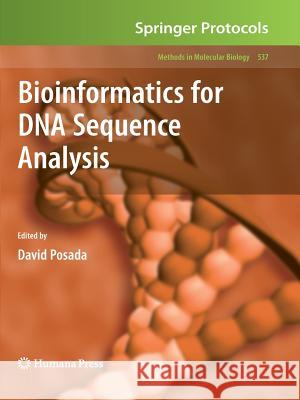Bioinformatics for DNA Sequence Analysis » książka
Bioinformatics for DNA Sequence Analysis
ISBN-13: 9781617378393 / Angielski / Miękka / 2010 / 354 str.
The recent accumulation of information from genomes, including their sequences, has resultednotonlyinnewattemptstoansweroldquestionsandsolvelongstandingissues inbiology, butalsointheformulationofnovelhypothesesthatarisepreciselyfromthis wealth of data. The storage, processing, description, transmission, connection, and analysis of these data has prompted bioinformatics to become one the most relevant applied sciences for this new century, walking hand-in-hand with modern molecular biology and clearly impacting areas like biotechnology and biomedicine. Bioinformatics skills have now become essential for many scientists working with DNA sequences. With this idea in mind, this book aims to provide practical guidance andtroubleshootingadviceforthecomputationalanalysisofDNAsequences, covering a range of issues and methods that unveil the multitude of applications and relevance that Bioinformatics has today. The analysis of protein sequences has been purposely excludedtogainfocus.Individualbookchaptersareorientedtowardthedescriptionof theuseofspecificbioinformaticstools, accompaniedbypracticalexamples, adiscussion on the interpretation of results, and specific comments on strengths and limitations of the methods and tools. In a sense, chapters could be seen as enriched task-oriented manuals that will direct the reader in completing specific bioinformatics analyses. The target audience for this book is biochemists, and molecular and evolutionary biologiststhatwanttolearnhowtoanalyzeDNAsequencesinasimplebutmeaningful fashion. Readers do not need a special background in statistics, mathematics, or computer science, just a basic knowledge of molecular biology and genetics. All the tools described in the book are free and all of them can be downloaded or accessed throughtheweb.Mostchapterscouldbeusedforpracticaladvancedundergraduateor graduate-level courses in bioinformatics and molecular evolut











